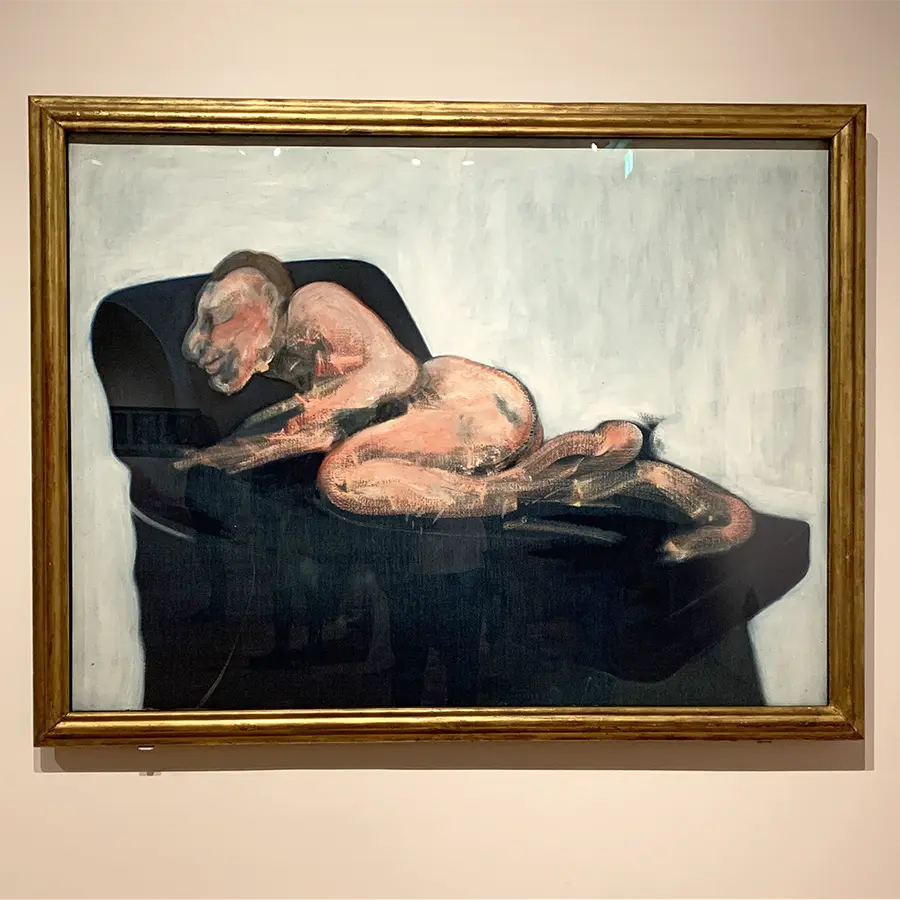Francis Bacon’s work delivers a raw, haunting exploration of human existence. Human Presence at London’s National Portrait Gallery invites viewers into his intense world through over 55 striking portraits, tracing his artistic evolution and challenging us to confront the fragile nature of identity.
Visitors are drawn into Bacon’s unsettling style, beginning with Head VI (1949), an eerie depiction of a tormented Pope, and concluding with Triptych, May–June 1973, a sorrowful portrayal of his lover George Dyer’s last moments. The progression reflects Bacon’s evolution from experimenting with iconic figures to deeply intimate portrayals of close friends and lovers.
Bacon’s portraits often deviate from the polished, idealized depictions seen in traditional art. Instead, his work, such as the primal Henrietta Moraes (1966), embraces an unfiltered look at human nature, with compositions characterized by intense brushwork and bold, shifting colors.
Bacon’s reinterpretations of master painters like Van Gogh and Velázquez add historical depth, bridging classical reverence with his stark reality. Though his work is steeped in personal and existential anguish, his portrayal of unconventional friendships and queer identity remains underexplored.
The exhibition scrutinizes the recurring motif of teeth in Bacon’s work, symbolizing the omnipresence of death. In Study of the Human Head, he combines an x-ray image with a man’s smile, creating a chilling reminder of mortality.

His portraits capture not only individual anguish but also the collective trauma of the post-World War II era. The grotesque imagery, particularly in Study for a Portrait, reflects the horror and disillusionment of the time. Through disfigured faces and screaming figures, Bacon mirrors humanity’s disintegration amid unprecedented violence, echoing the loss and devastation of the Holocaust and war.
Bacon’s tumultuous personal experiences, particularly his relationships, intensify his work. In Sleeping Figure (1959), he portrays his lover Peter Lacy with a tenderness that contrasts with the violence in other pieces. His paintings of George Dyer, especially Triptych, May-June 1973, serve as a poignant homage to their bond. Dyer’s tragic suicide just two days before Bacon’s Paris retrospective haunted him, culminating in a triptych that captures Dyer in his final moments, ensnared in self-destruction.
In Bacon’s later years, his approach softened, yet he retained an unyielding commitment to portraying humanity’s darkest facets. His Self-Portrait (1987) embodies a quiet resignation, capturing the artist’s weary face at 78, offering a somber reflection on mortality.
Human Presence portrays Bacon’s journey from intense vitality to a subdued contemplation of life’s impermanence, solidifying his legacy as an artist who dared to confront the brutal realities of the human condition through his art.





